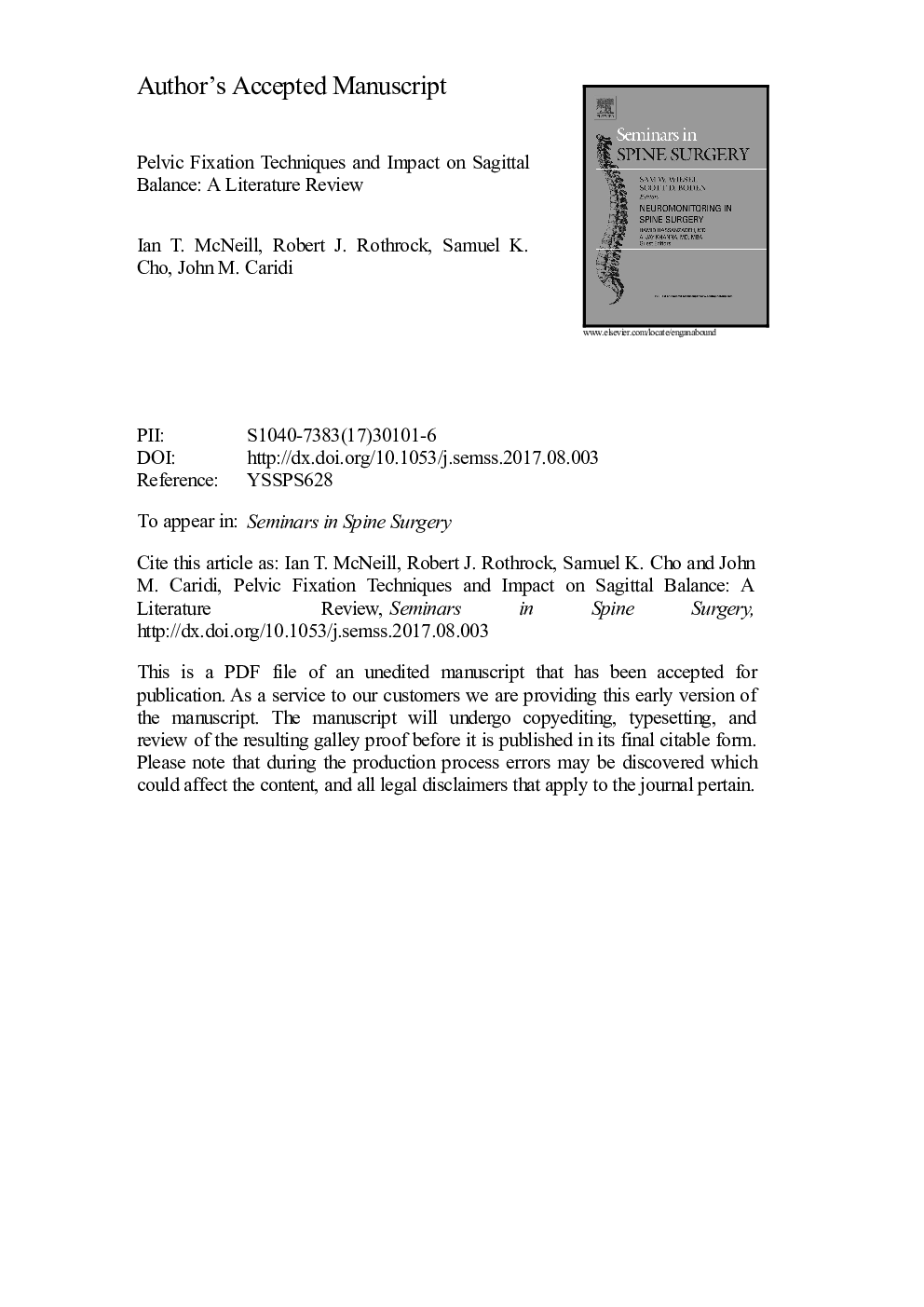| Article ID | Journal | Published Year | Pages | File Type |
|---|---|---|---|---|
| 8804143 | Seminars in Spine Surgery | 2017 | 22 Pages |
Abstract
As adult spinal deformity (ASD) surgery advances, pelvic fixation techniques have evolved to confront several challenges such as pseudoarthrosis and instrumentation failure. Concurrently, ASD literature has identified sagittal balance as one of the pre-eminent factors in clinical outcomes in patients undergoing ASD surgery. However, despite advances in surgical technique and understanding of clinical outcome predictors, there is limited evaluation of the impact of pelvic instrumentation on global sagittal alignment. This review provides context on historical pelvic instrumentation options and assesses the advantages and disadvantages of modern pelvic fixation techniques in ASD surgery with respect to sagittal balance. Available data suggest that pre- and postoperative sagittal balance correction remains an important clinical outcome predictor, but such a correction can be undermined by postoperative complications such as pseudoarthrosis and instrumentation failure over the long term. Therefore, choice of instrumentation construct should not only consider intraoperative factors and immediate sagittal balance correction but also prevention of complications over patients' full postoperative course. Future research should directly evaluate pelvic fixation techniques in the context of long-term postoperative clinical and radiologic outcomes, specifically sagittal balance.
Related Topics
Health Sciences
Medicine and Dentistry
Orthopedics, Sports Medicine and Rehabilitation
Authors
Ian T. MD, Robert J. MD, Samuel K. MD, John M. MD,
